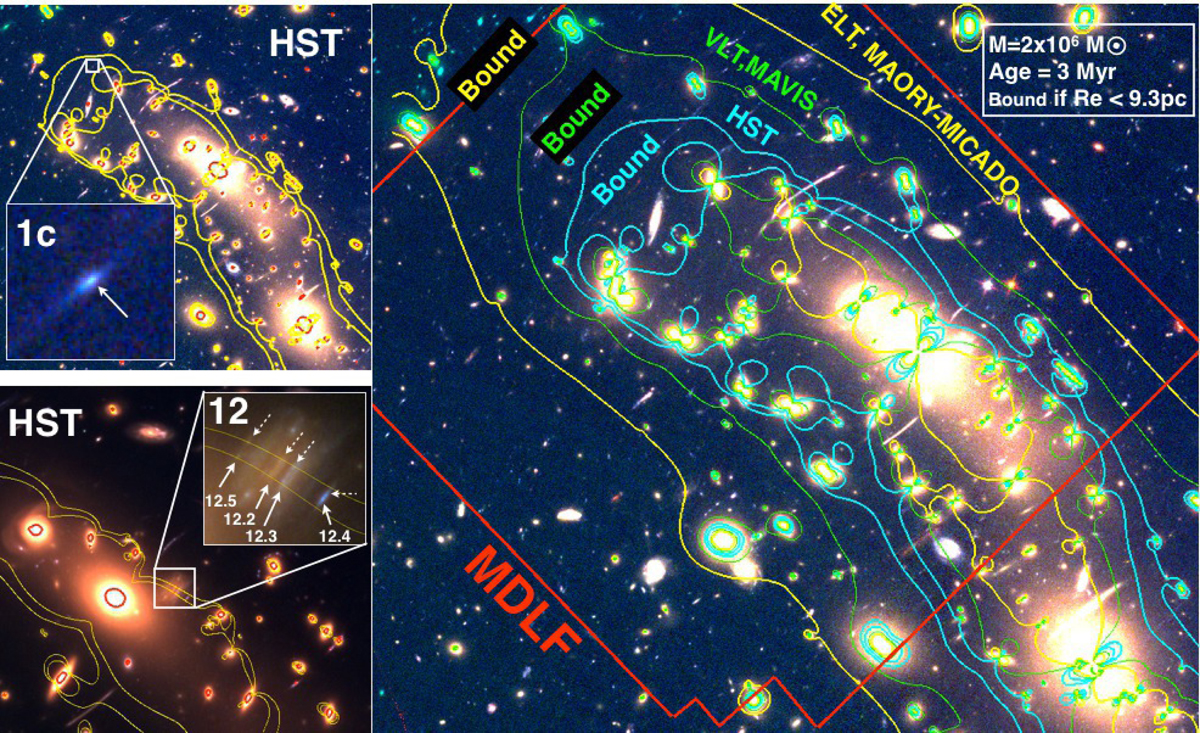Fig. 16.

Left panels: locus of dynamical age Π = 1 at the redshift of image 1c (z = 3.237, top) and 12 (= 0.939, bottom) is highlighted with yellow contours; a star cluster with an effective radius matching one HST pixel (30 mas) lying within such contours is gravitationally bound if its age is larger than 3 Myr or it has a stellar mass larger than 2 × 106 M⊙. The compact knots detected in image 1c and 12 are candidate gravitationally-bound star clusters under the above assumptions. The insets show the zoomed source 1c and 12, with arrows indicating the most magnified knots. Right panel: same contours of Π = 1 at the redshift of source 1 adopting the HST 30 mas pix−1 scale (cyan line), VLT/MAVIS (7.5 mas pix−1, green line), and E-ELT/MAORY-MICADO (4 mas pix−1, yellow line) are superimposed onto the same HST color image shown in the left panels (red = F105W, green = F814W and blue = F606W). The layout of the MDLF is shown in red. It is worth noting that ELT can probe gravitationally bound young massive clusters even with moderate magnification 2 < μ < 4, a regime in which μ is free from systematic errors and by foreground contamination by galaxy cluster members.
Current usage metrics show cumulative count of Article Views (full-text article views including HTML views, PDF and ePub downloads, according to the available data) and Abstracts Views on Vision4Press platform.
Data correspond to usage on the plateform after 2015. The current usage metrics is available 48-96 hours after online publication and is updated daily on week days.
Initial download of the metrics may take a while.


